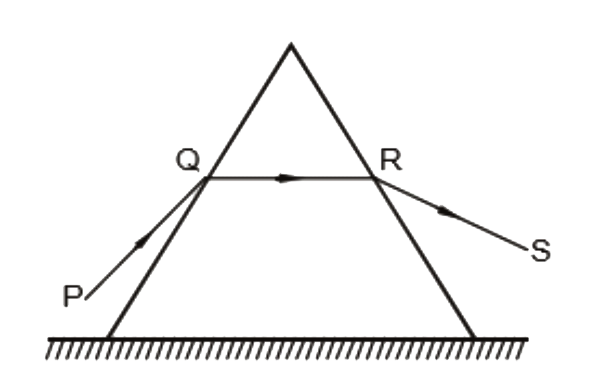The condition of minimum impedance is:
XC≠XL
XC=XR
XC≠XR
XC=XL
The correct Answer is:D
To solve the question regarding the condition of minimum impedance in an RLC circuit, we can follow these steps:
Step 1: Understand the Impedance Formula
The impedance Z in an RLC circuit is given by the formula:
Z=√R2+(XL−XC)2
where:
- R is the resistance,
- XL is the inductive reactance,
- XC is the capacitive reactance.
Step 2: Identify the Condition for Minimum Impedance
To find the condition for minimum impedance, we need to minimize the expression for Z. The term (XL−XC) is crucial here.
Step 3: Set the Condition for Minimum Impedance
The impedance Z will be at its minimum when the difference between the inductive reactance and the capacitive reactance is zero:
XL−XC=0
This implies:
XL=XC
Step 4: Relate Reactance to Frequency
The inductive reactance XL is given by:
XL=2πfL
and the capacitive reactance XC is given by:
XC=12πfC
Setting these equal gives us the resonance condition:
2πfL=12πfC
Step 5: Conclusion
Thus, the condition for minimum impedance in an RLC circuit occurs when:
XL=XC
This is known as the resonance condition.
Final Answer
The condition of minimum impedance is when the inductive reactance equals the capacitive reactance, i.e., XL=XC.
---
The impedance Z in an RLC circuit is given by the formula:
Z=√R2+(XL−XC)2
where:
- R is the resistance,
- XL is the inductive reactance,
- XC is the capacitive reactance.
To find the condition for minimum impedance, we need to minimize the expression for Z. The term (XL−XC) is crucial here.
The impedance Z will be at its minimum when the difference between the inductive reactance and the capacitive reactance is zero:
XL−XC=0
This implies:
XL=XC
The inductive reactance XL is given by:
XL=2πfL
and the capacitive reactance XC is given by:
XC=12πfC
Setting these equal gives us the resonance condition:
2πfL=12πfC
Thus, the condition for minimum impedance in an RLC circuit occurs when:
XL=XC
This is known as the resonance condition.
The condition of minimum impedance is when the inductive reactance equals the capacitive reactance, i.e., XL=XC.
Topper's Solved these Questions
- SAMPLE PAPER 5BOOK - EDUCART PUBLICATIONCHAPTER - SAMPLE PAPER 5EXERCISE - SECTION - C
6 Videos
- SAMPLE PAPER 5BOOK - EDUCART PUBLICATIONCHAPTER - SAMPLE PAPER 5EXERCISE - SECTION - C
6 Videos
- SAMPLE PAPER 3BOOK - EDUCART PUBLICATIONCHAPTER - SAMPLE PAPER 3EXERCISE - SECNTION -C
6 Videos
- SAMPLE PAPER 6BOOK - EDUCART PUBLICATIONCHAPTER - SAMPLE PAPER 6EXERCISE - Section-C
6 Videos
Similar Questions
Knowledge Check
The condition for minimum change in pH for a buffer solution is
AIsoelectronic species are addedBConjugate acid or base is addedCpH=pKaDNone of theseThe condition for minimum change in pH for a buffer solution is
AIsoelectronic species are addedBConjugate acid or base is addedCpH=pKaDNone of theseImpede
AExpediteBThwartCHamperDRetard
What is the condition for minimum deviation through then prism ? What is prism formula ?
View SolutionIn a condition of minimum deviation μ=√3. Angle of incidence = 2 x angle of refraction then find angle of prism.
View SolutionWhat are the conditions for maximum and minimum pull of a lift on a supporting cable ?
View SolutionIn diffraction due to a single slit, what is the condition for first minimum ?
View SolutionRefraction of light through Prism| condition of maximum and minimum deviation|Dispersion of light through Prism
View Solution

